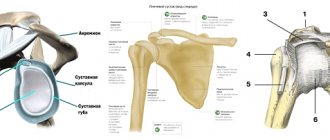Not only popular blood and urine tests can reveal problems in the body’s functioning system. In some cases, microflora seeding is also effective. In particular, this concerns the detection of diseases of the reproductive system in women and men. The polymorphic rod in the smear will be one of the important indicators here. What does it define? The presence and quantity of bacteria and other microorganisms in the test material. This information, combined with other indicators, allows the specialist to diagnose or rule out any disease. We will present the reasons for the appearance of polymorphic rods, methods of diagnosis, treatment, and prevention to the reader below.
What is microflora?
To better understand what a polymorphic rod in a smear is, we first need to get acquainted with the term “microflora”. This is the name given to all kinds of bacteria that exist in the human body. Some of them are in symbiosis with us - they coexist relatively amicably and are vitally useful. Like, for example, intestinal microflora, which helps the process of food digestion. In addition, bacteria are common in the oral cavity and on the human genitals.
Depending on the harmfulness/usefulness, all microflora is divided into three categories:
- Normal. Supports the proper functioning of certain organs and is vital for the body. Moreover, some bacteria even perform protective functions in relation to our body and contribute to a high level of immunity.
- Conditionally pathogenic. It does not benefit the human body, but does not harm it either. However, under the influence of certain factors, such bacteria and fungi begin to actively multiply. Then, under the influence of their metabolic products, the beneficial microflora is inhibited, and the normal functioning of the body and its organs is disrupted. Hence, even simple dysbiosis can become good soil for the development of dangerous infections and inflammations.
- Pathogenic. These are bacteria that have a sharply negative effect on the body. The defenses of a healthy person can actively resist them. However, failure to comply with personal hygiene rules, reduced immunity, and imbalance of microflora aggravate the condition and increase the chances of being affected by a virus or infection.
What does a polymorphic rod in a smear mean?
As you guessed, this representative will belong specifically to the microflora category. A polymorphic rod in a smear is a microscopic organism that, among other things, can cause pathogenic changes in a woman’s vagina, cervix, and cervical canal.
The antagonist of the polymorphic rod will be the Dederlein rod. This is a microorganism useful to the human body, which creates a favorable “residence” for lactobacilli. It is the latter that prevent the mucous membrane of the genital organs from drying out and prevent pathogenic bacteria from multiplying, an example of which is the polymorphic bacillus in a smear.
Accordingly, a decrease in the number of Dederlein bacilli (for example, due to dysbacteriosis) is an unfavorable factor. This threatens to increase the number of harmful polymorphic microorganisms. This is reflected in a sharp increase in the number of leukocytes in the blood (defender cells that are synthesized to fight harmful elements). Based on this factor, a specialist can judge that there is an infection or inflammatory process in the body.
Possible complications
The formation of large colonies of pathogenic bacteria in the vagina threatens inflammation of the vaginal walls and cervix. Over time, bacteria will penetrate into the uterus itself, which will lead to the development of endometritis and adnexitis. Inflammation can affect the urethra and bladder.
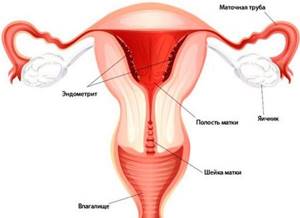
The accumulation of bacteria, the body’s reduced readiness to resist, leads to sexually transmitted infections: herpes virus, gonococci, chlamydia.
Disruption of the normal microflora in women, one of the reasons for which is a polymorphic bacillus found in a smear, is not a harmless disease at all. You should not put off visiting a doctor, because vaginal dysbiosis leads to serious problems.
Author: Belyaeva Anna
Warning symptoms and signs
Two procedures can determine the polymer rod in the flora of the genital organs - bacteriological culture and the already mentioned smear. But how do you know that you need to go for an emergency examination to the clinic?
Changes in the microflora of the genital organs usually manifest themselves externally in a similar way:
- Large volumes of vaginal discharge with a characteristic grayish, whitish, yellowish tint.
- The smell of the mass is sour, somewhat reminiscent of sour milk or rotten fish.
- There is constant discomfort and itching in the genital area and perineum.
- Sexual intercourse is painful.
- When urinating, discomfort or even pain is experienced.
- Sometimes uncharacteristic discharge comes out of the vagina - with pus, green in color.
- Pain in the perineal area, lower abdomen.
Such symptoms indicate not only changes in the flora, as indicated by a polymorphic rod in a smear. They may also indicate the development of thrush, dysbacteriosis, colpitis, vaginosis, and a number of sexually transmitted infectious diseases.

Coccobacillary flora
The content of the article
When coccus bacilli spread, there is a sharp decrease in beneficial microflora, and such changes can cause the development of colpitis and its complications. If pathological disorders are ignored for a long time, infertility may develop. Coccal flora is also dangerous because it can be transmitted from partner to partner, and therefore requires a responsible approach to treatment.
A smear for bacillary flora is usually taken at every scheduled visit to the gynecologist. The prerequisites for conducting an unscheduled study may be the patient's complaints of pain in the lower abdomen, itching and burning in the genital area, pain during sexual intercourse, and uncharacteristic discharge with an unpleasant odor.
As for the bacillary flora, here we are, as a rule, talking about the spread of bacilli in the vagina, similar in shape to rods. In medical practice, acceptable standards for the presence of such bacteria in a smear have been established. The bacilli perform important functions by ensuring the production of lactic acid, which has protective properties.
Against the background of a significant decrease in the number of lactobacilli, the development of bacterial vaginosis and other dangerous infectious diseases may begin. If the permissible number of bacilli is exceeded for one reason or another, the environment in the vagina may become too aggressive, which will complicate the fertilization process.
Polymorphic rods in the analysis results - what does this mean?
A polymorphic rod in a woman’s smear is sometimes determined by her as the presence of some disease or infection. But a note about the content of a microorganism in the material under study only indicates its presence, and not its pathogenicity. This is the name given to many bacteria and microbes that, under the glass of a microscope, have a characteristic rod shape.
Like all microflora, they are divided into normal, opportunistic and harmful. Polymorphic rods in a smear in large quantities can indicate both a healthy microflora and a pathogenic one, which is why the norms for their content are relative.
It is very difficult to identify the type of microorganism (harmful or beneficial) by appearance under a microscope. Here you need to carry out a more complex analysis - bacteriological culture. By the way, such a study helps determine the sensitivity of identified microorganisms to certain antibiotics. And this already allows you to create an effective treatment regimen.
How is the pathogenicity of a polymorphic rod in a smear determined in women? The specialist also evaluates other identified factors - the content of leukocytes, other microorganisms, their percentage. All this taken together allows us to paint a general diagnostic picture.
Treatment methods for polymorphic rod
To correct the microflora, the root cause of dysbiosis should be established. If pregnancy or gynecological surgery is not planned, then you can do without medications, waiting until the balance is restored on its own. If aggravated symptoms are present, drug treatment is required.
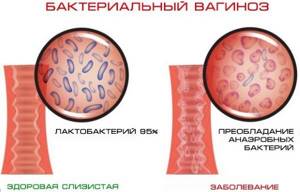
A polymorphic bacillus that has multiplied in the microflora, as evidenced by a smear taken from a woman, is treated in 2 stages.
Initially, it is assumed that antibacterial and antiseptic drugs are used that suppress the proliferation of pathogens. At stage 2, drugs are used that restore the microflora. Between stages 1 and 2 of treatment, medications are prescribed that destroy the biofilm that pathogens create to reduce the activity of cells that protect the body.
Therapy with antibacterial drugs has side effects in the form of death of natural flora and is not always effective, due to the fact that pathogenic organisms take various forms. Many bacteria have increased resistance to many drugs.
Medications
Antibacterial drugs:
- Metronidazole. The drug is taken after meals, twice a day, 2 tablets. Treatment is carried out for 10 days. It is recommended to use intravaginal suppositories simultaneously with the tablets. Use a suppository in the morning and evening. Candle therapy is carried out at the beginning of the menstrual cycle. Price of the drug: 10–30 rubles.
- Atrican. The tablets are taken orally with meals, 1 capsule 2 times a day, morning and evening. Treatment lasts 4 days. It is not recommended to increase doses. The price of the drug is 2—–300 rubles.
- Ornidazole. Vaginal tablets are used 1 pc. daily before bed, for 5 days, for trichomoniasis. To treat vaginitis, 1 piece is inserted deep into the vagina. before bedtime, for 7 days. The drug costs from 70 rubles.
- Clindamycin. It is used in the form of suppositories, the course of treatment is 3 days, suppositories are administered 1 pc. for the night. The drug has many side effects; use must be discussed with your doctor. The price of the drug is from 300 to 500 rubles.
Medicines based on lactobacilli improve the effect of antibacterial therapy:
- Vagilak. Take 1 capsule per day with meals. Improvement occurs after 2 weeks.
- Lactozhinal. For therapeutic purposes, it is used for 7 days, 1 vaginal suppository 2 times a day. For prevention, take 1 suppository once a day.
- Gynoflor. The drug is used during menopause, 1-2 tablets intravaginally, for 12 days.
- Trioginal. Take 1 capsule intravaginally in the morning and evening for 2 weeks.
A drug that destroys bacterial biofilm:
- Vaginorm-S. Vaginal tablets, taken daily, 1 piece, for two weeks.
Other methods
Treatment involves the use of biological products that restore the biocenosis of the vaginal microflora.
These are dental preparations:
- Acylact;
- Lactobacterin;
- Bifidin;
- Bifidumbacterin.
Traditional methods
A polymorphic bacillus in a smear in women, discovered during a visit to the doctor, may be a sign of vaginal dysbiosis, which can be treated with home remedies.
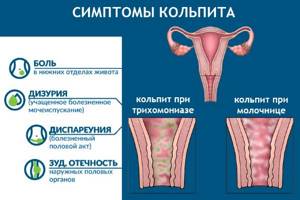
Treatment with tampons:
- It is good to moisten the tampon in natural milk or yogurt.
- Insert it into the vagina, pushing it as far as possible and leave it for several hours.
- For moistening, you can prepare a mixture consisting of milk and turmeric powder at the rate of 1 tsp. powder per 200 ml of warm milk.
- Soak the tampon in a solution consisting of 3% hydrogen peroxide diluted in equal quantities with water. The tampon is inserted into the vagina for 30 minutes.
- Coconut oil has preventive and antibacterial properties. You can also moisten a tampon with it for a hygienic procedure and leave it in the vagina for 2 hours.
Apple cider vinegar is a good pH restorer. You can add it to a warm bath and sit in it for 30 minutes.
Herbs with medicinal properties:
- sweet clover;
- sagebrush;
- nettle;
- celandine;
- thyme.
Herbal infusions are used for douching, lotions, and baths.
Necessity of a smear: health check, pregnancy
A smear on the microflora of the genital organs allows you to monitor their normal state and detect pathogenic changes in time. Gynecologists advise repeating such an analysis for preventive purposes at least once a year.
It is necessary to identify polymorphic rods in a smear in pregnant women in a timely manner. While carrying a baby, a woman should listen more sensitively to her body and monitor the discharge from the genitals. It is their character that primarily indicates the painful state of the microflora and the need for urgent analysis.
Most often, polymorphic bacilli are detected in a smear during pregnancy in the first trimester. The proliferation of pathogenic bacteria here is associated with developing thrush, which will be a consequence of decreased immunity and general hormonal changes in the body of the expectant mother.
The second common cause is vaginal dysbiosis. It can be associated with a number of problems in the functioning of the body. In the first place here will be disorders of the digestive tract and poor nutrition.
A large number of polymorphic rods in a smear is an alarming signal for a pregnant woman. After all, it is thrush that provokes ruptures during pregnancy. The disease makes tissues less elastic due to their severe depletion.
It is dangerous for the mother to get thrush and for the child. It can become infected with polymorphic microorganisms while passing through the woman’s genital tract. In the baby they cause oral thrush, synechiae and other infectious diseases.
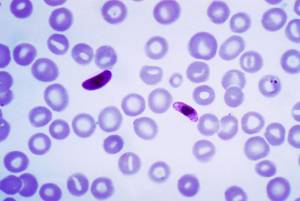
Preparing for a smear test
The optimal time for a smear on the flora is the middle of the cycle. During menstruation, biomaterial is not collected. This is due to the fact that the presence of blood cells can significantly distort its results. Material for analysis can be taken from the urethra, from the vaginal walls or from the cervical canal. The preparatory measures for all three studies do not have any fundamental differences. At the consultation, the obstetrician-gynecologist will clarify whether antibiotics have been taken in the last two weeks before the appointment. If the answer is positive, the smear will be rescheduled for another time. The most reliable results can be obtained only by observing a number of conditions. On the eve of the smear you should:
- Eliminate the use of any vaginal suppositories for two to three days.
- Limit sexual intercourse in two to three days
- The day before the test, do not take a bath (shower only)
- Avoid vaginal douching for two days
- On the day of visiting the doctor, perform a standard toilet of the genitals with water
- Reschedule other gynecological examinations to another time (for example, colposcopy, ultrasound scanning with an intravaginal probe)
What do the indicators in the analysis results indicate?
The results of a study of the microflora of the genital organs are usually provided by laboratories a couple of days after the biomaterial is submitted for examination. They should be provided to the attending physician - only a specialist is able to correctly interpret the identified information about the polymorphic rod (flora).
Let us present to your attention what certain indicators and deviations can mean:
- In normal health, the vast majority of vaginal microflora are Dederlein's bacilli, large and immobile gram-positive lactobacilli that do not form spores.
- A high percentage of lactobacillary microflora will indicate good condition.
- Leukocytes, erythrocytes and mixed microflora are allowed in small quantities.
- The normal leukocyte count in this case is 10 per 1 cm2. Note that during pregnancy the indicator may be slightly increased.
- Small sticks in small quantities also do not indicate a pathological process.
- If a woman is sexually active, then it will be normal for her to have mixed flora when taking a sample for analysis in the days before and after menstruation.
- It is normal to contain mixed microflora in a biomaterial sample when taken at the time of hormonal changes in the body - in teenage girls, women at the menopausal stage of life.
The following will be said about pathology:
- A significant amount of small polymorphic rods in the smear (flora). Most often this is a consequence of dysbiosis, bacterial vaginosis.
- High number of leukocytes, coccobacillary microflora. Most often it indicates the development of a sexually transmitted disease or bacterial vaginosis. In some cases, it is a consequence of several pathological processes that appeared in parallel.
- Enteric pathogenic coli. Promotes dysbiosis in the genitals, causing thrush.
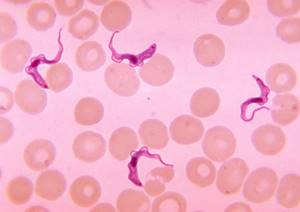
Additional diagnostics
We know that a smear alone is rarely sufficient to make a clear diagnosis. Therefore, the specialist prescribes a number of additional examinations:
- Colposcopy. Helps to exclude/confirm the development of not only colpitis, but also a number of other inflammatory and infectious diseases.
- Taking material from the cervix and cervical canal for culture. Primarily for immunological research.
- Ultrasound examination of the pelvic organs. It is prescribed if a woman notices pain. Eliminates the likelihood of developing cervical dysplasia and cystic formations.
Features of treatment
Features of treatment for polymorphic rod in a smear are as follows:
- Therapy for diseases of this nature is usually prescribed in a comprehensive manner - both for the patient and for his sexual partner. The latter should undergo at least preventive treatment. For example, this is typical when candidiasis is detected.
- It is worth noting that in men, pathogenic changes in the microflora of the genital organs are most often asymptomatic. Thus, a person continues to exist with a hidden pathology, infecting his sexual partner over and over again. Treatment of the second, of course, will be ineffective in this case.
- To restore the normal balance of microflora, the doctor most often prescribes antibiotics. The forms of these medications are varied - tablets, vaginal suppositories, capsules, ointments and topical creams. For therapy to be most effective, a combination of several medications is prescribed.

Detection of coccobacillary flora during pregnancy
Hormonal imbalances that the body encounters during pregnancy can also provoke the development of bacteria in a woman’s vagina. If single cocci are detected in a smear, it may be recommended to pay more attention to genital hygiene, as well as the use of special suppositories and other topical medications.
If a smear examination reveals an unacceptable number of cocci, complex treatment will be required. Otherwise, a pregnant woman risks the spread of inflammatory processes to the organs of the genitourinary system, which can negatively affect the normal course of pregnancy.
To normalize the coccobacillary flora, probiotics and correction of the pregnant woman’s diet can be used. An important role in the complex treatment of pathological changes in flora during pregnancy is also played by measures aimed at strengthening the immune system, because many disorders and diseases develop precisely against the background of decreased immunity.
In all cases, only an experienced gynecologist can prescribe competent treatment. Therefore, do not try to decipher flora tests yourself - entrust this to a specialist.
Take care of yourself and be healthy!
ONLINE REGISTRATION at the DIANA clinic
You can sign up by calling the toll-free phone number 8-800-707-15-60 or filling out the contact form. In this case, we will contact you ourselves.
If you find an error, please select a piece of text and press Ctrl+Enter
Drug therapy
Drug treatment can be represented by the following drugs:
- Pimafucin suppositories and ointments.
- Vaginal tablets and suppositories "Terzhinan". They fight the inflammatory process caused by itching.
- Antibiotics "Cefixin" and "Ceftriaxone". Suppress the metabolism of pathogenic microorganisms, relieve irritation of the mucous membrane.
- Clindamycin and Fluconazole. Medicines that are prescribed by a doctor when a fungal infection is detected.
Please note that only the attending doctor can prescribe medications suitable for the patient, their dosage, time, and frequency of use!
Along with taking medications, you must also adhere to a special diet. It should contain as much fermented milk products as possible, and a minimum amount of sweet and starchy foods.

Preventive measures
If treatment regimens are individual for each patient, then prevention is the same for everyone:
- Compliance with basic rules of personal hygiene. In particular, washing the genitals at least once a day.
- During such water procedures, women are advised to use special detergents that maintain the beneficial acidic environment of the vagina. Its violation leads to a decrease in local immunity.
- Women should avoid douching, which washes away beneficial microflora. The exception is if such a procedure was prescribed by the attending doctor.
- Wearing panty liners and thongs should be kept to a minimum. They increase the risk of developing harmful and opportunistic microflora.
- Selective attitude towards sexual partners, use of contraceptives and other means designed to protect against sexually transmitted infections.
- Strengthening immunity - local and general, correct daily routine, sufficient sleep, a nutritious diet. It is also important to protect yourself from stressful situations.

Polymorphic rods found in large quantities in a smear do not in themselves indicate a disease. An important indicator is their pathogenicity, which is determined by a specialist based on a number of additional factors. When a disease is diagnosed, the patient is prescribed individual treatment.










